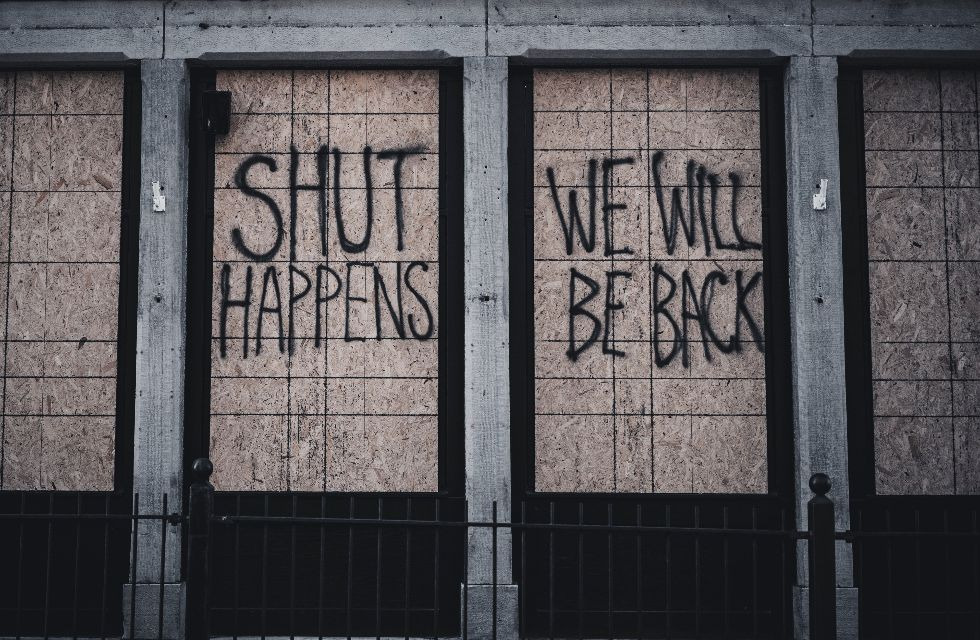No Good News in April Blue Collar Jobs Report Even for States Resisting Business Closures
Employment in construction, manufacturing, and mining and logging decreased by 2,373,000 jobs in April, according to the Bureau of Labor Statistics. This was, of course, largely attributed to the closure of nonessential businesses and decrease in work during the coronavirus pandemic. But looking at the data, state-by-state, certain regions suffered more than others.
The construction sector lost 995,000 jobs in April. By region, the Northeast saw the largest drop, a loss of 395,900 jobs, followed by the West with 264,000 jobs, and the Midwest with 264,000.
South Dakota was the only state to see an increase in construction jobs, with 500 jobs added in April. There’s a chance this will change as the data are adjusted, but this also tracks with a trend that states with flexible definitions of essential businesses or limited to no lockdown orders experienced fewer losses than others. Seven states did not order residents to stay at home, and of those, South Dakota was the only state to oppose lockdown orders as well as business closures. Sioux Falls, SD, also happened to be the largest coronavirus hotspot in April, as infections spread through a Smithfield pork processing plant.
New York, which early on was the center of the pandemic in the US, saw the largest drop in construction jobs. The state lost 166,200 jobs in April, a 40.8 percent drop from the month before. California, which took action early on to close businesses and restrict residents’ travel, lost 132,100 jobs, a 15.0 percent drop from the month before. Finally, Pennsylvania lost 100,900 jobs, a 38.9 percent drop from the month before. Pennsylvania Governor Tom Wolf didn’t issue a statewide stay-at-home order until April 1; though seven counties had orders in place in late March.
Jobs in the manufacturing sector decreased by 1,324,000 in April. By region, the Midwest saw the largest drop, with 524,200 jobs, followed by the South, with 366,400, and the Northeast, with 244,400. South Dakota, again, saw a minor decrease in jobs, a 500 or 1.1 percent drop. Wyoming experienced a loss of 100 jobs, a 1.0 percent drop from the month before.
As a region, though, the West had the fewest losses, seeing only a decrease in 185,900 jobs. Again, this is reflected by states that had flexible or no closure measures in place, and in the West, Arizona and Utah reflected this trend.
In an executive order issued on March 23, Arizona Governor Doug Ducey laid out categories of essential businesses allowed to operate in the state during lockdown. By this order, counties, cities and towns can not prohibit businesses listed as essential from operating, so there should be little variance between major metropolitan areas, at least in terms of operating status of companies.
According to the order, construction, food and beverage manufacturing, and manufacturing and supply chain companies making products used by essential business operations are considered essential infrastructure operations. This is reflected in the state employment numbers over the last three months. From February to April, manufacturing in Arizona decreased by 2,900 jobs. The majority of those jobs (2,200) were lost in April, a 1.2 percent drop from the month before. Compare this with neighboring state, California, which had more restrictive stay-at-home orders in place and saw a loss of 130,700 manufacturing jobs over the same three-month period. California lost 118,700 jobs in April, a 9.1 percent drop from the month before. According to the Arizona Department of Health Services, however, a record number of people died in March and April, making them two of deadliest months in state history. Using Census population data and data from the COVID Tracking Project, the fatality rate through April for California has been 5 deaths per 100,000 residents and in Arizona, 16 deaths per 100,000 residents.
In Utah, Governor Gary Herbert’s directive and advice from the Salt Lake Chamber stated “business leaders [should] do what is right for their employees and customers;” though the governor advised residents to follow social distancing guidelines. The state experienced a decrease in 1,800 manufacturing jobs in April, a 1.3 percent drop from the month before. But again, through April, Utah’s coronavirus fatality rate has been 12 deaths per 100,000 residents.
Michigan, Ohio and New York had the largest drops in manufacturing jobs, with losses of 174,000, 96,300 and 80,300 jobs, respectively. This is a massive blow to the manufacturing sector in these states, as none has recovered from losses incurred by the Great Recession.
In comparison to construction and manufacturing, the decrease of 54,000 mining and logging jobs in April seems less devastating. But mining and logging is a much smaller sector that has seen a constant decrease in jobs leading up to the pandemic. From January 2019, when the sector was at a high of 746,000 jobs, to January 2020, the sector had already lost 34,000 jobs. Texas saw the largest drop in mining and logging jobs, with a net 24,300 loss. Business and stay-at-home restrictions in Texas have varied county by county. Texas also experienced a loss of 62,500 construction jobs in April, a 7.9 percent drop from the month before. It’s not clear if the differences between counties in their interpretation of Governor Greg Abbott’s directives led to some areas faring better than others. One would have to break down jobs in the state by metropolitan areas to investigate.
Others have been studying the connection between social distancing measures and employment much more closely, so this report shouldn’t be considered definite evidence. Looking at the data, it’s clear that there might be a trend. More research is necessary, especially considering the data are adjusted month-to-month. Looking at the state jobs numbers, however, it’s clear that April was a terrible month for everyone.
Arizona California Construction Coronavirus Logging Manufacturing Mining Ohio Pennsylvania South Dakota Texas Utah Wyoming

